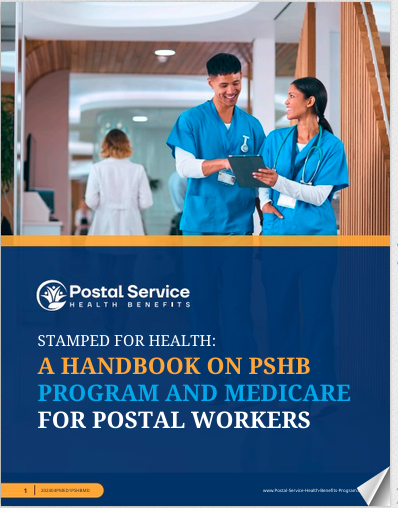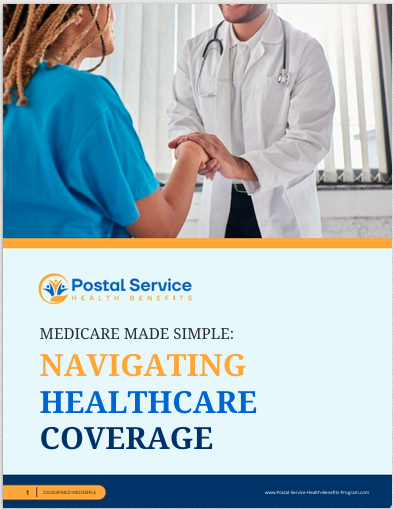Key Takeaways
-
Medicare Advantage and Original Medicare each offer different benefits, and your decision should depend on your health needs and budget. While Medicare Advantage might provide additional perks, Original Medicare offers flexibility that could be beneficial in the long run.
-
As a Postal Service retiree, your PSHB coverage plays a key role in your Medicare decision. Understanding how your health benefits integrate with Medicare is crucial to avoiding unnecessary out-of-pocket costs.
Understanding Your Medicare Choices as a Postal Retiree
Choosing between Medicare Advantage and Original Medicare can be confusing, especially with the transition to the Postal Service Health Benefits (PSHB) program in 2025. As a Postal Service retiree, the way you coordinate your benefits with Medicare will impact your costs and coverage. Let’s break down the key differences and what you need to know before making your decision.
What’s Included in Original Medicare?
Original Medicare consists of two main parts:
-
Medicare Part A (Hospital Insurance): Covers inpatient hospital stays, skilled nursing facility care, hospice, and limited home health care.
-
Medicare Part B (Medical Insurance): Covers doctor visits, outpatient care, medical supplies, and preventive services.
While Original Medicare provides broad coverage, it does not include prescription drugs, dental, vision, or hearing benefits. However, PSHB plans may help cover some of these gaps for Postal retirees. It is essential to check the details of your PSHB plan to understand how it integrates with Medicare and what additional benefits you may receive.
How Do You Qualify for Original Medicare?
To qualify for Original Medicare, you must meet certain eligibility criteria:
-
You must be 65 or older or qualify due to disability.
-
You must have worked and paid Medicare taxes for at least 10 years (40 quarters) or be eligible through a spouse.
-
You must be a U.S. citizen or a lawful permanent resident who has lived in the U.S. for at least five consecutive years.
What Does Medicare Advantage Offer?
Medicare Advantage (Part C) is an alternative to Original Medicare. These plans are offered by private insurance companies and must cover everything Original Medicare does, plus potentially extra benefits like:
-
Prescription drug coverage
-
Dental, vision, and hearing benefits
-
Wellness programs and additional perks
Network Restrictions and Coverage Limitations
While Medicare Advantage can seem like a more comprehensive option, it comes with network restrictions. Unlike Original Medicare, which allows you to see any provider who accepts Medicare, Medicare Advantage plans typically require you to use in-network providers. Out-of-network care may be limited or come with higher costs, making it less flexible if you frequently travel or require specialized care.
Comparing the Costs: Which One Saves You More?
Original Medicare Costs
With Original Medicare, your costs generally include:
-
Medicare Part A: Most retirees do not pay a premium for Part A, but there are deductibles and coinsurance.
-
Medicare Part B: The standard premium is $185 per month in 2025, plus a deductible of $257.
-
Out-of-pocket expenses: Original Medicare has no annual limit on out-of-pocket costs, though PSHB coverage can help reduce your share.
-
Medicare Supplement (Medigap) Options: If you choose Original Medicare, you may also purchase a Medigap policy to help cover costs like deductibles and copayments, though this comes with an additional premium.
Medicare Advantage Costs
Medicare Advantage plans typically have:
-
Monthly premiums (which vary by plan)
-
Copayments and deductibles
-
An annual out-of-pocket maximum, offering financial protection
-
Network limitations that can increase costs if you need care outside of your plan’s provider network
While Medicare Advantage may have lower monthly premiums, you might end up paying more in copayments and out-of-network costs if you need care outside of your plan’s provider network.
How Does PSHB Work With Medicare?
Under the PSHB program, retirees who are eligible for Medicare must enroll in Medicare Part B to maintain their health benefits. Here’s what you need to know:
-
PSHB + Original Medicare: Many PSHB plans coordinate with Original Medicare, reducing your out-of-pocket costs for hospital and medical services. Some plans even reimburse part of your Medicare Part B premium.
-
PSHB + Medicare Advantage: You can enroll in a Medicare Advantage plan instead of Original Medicare, but you’ll need to check if your PSHB plan provides any additional benefits or coordination.
-
Additional Benefits with PSHB: Some PSHB plans offer vision, dental, and hearing benefits that may supplement Original Medicare.
Which Option Offers More Provider Flexibility?
One of the biggest differences between Medicare Advantage and Original Medicare is provider access:
-
Original Medicare: Allows you to visit any doctor or hospital nationwide that accepts Medicare, making it ideal if you travel or need specialized care.
-
Medicare Advantage: Typically requires you to use a network of doctors and hospitals, which can be limiting if you prefer a specific provider who isn’t in-network.
If you live in an area with limited provider choices, Original Medicare combined with a PSHB plan may be the better choice for access to care.
Prescription Drug Coverage: What You Should Know
-
Original Medicare does not include drug coverage, so you’ll need to enroll in a separate Medicare Part D plan if your PSHB plan does not offer it.
-
Medicare Advantage often includes prescription drug coverage, but formularies (covered drug lists) vary, so you’ll need to check if your medications are covered.
-
PSHB and Prescription Drugs: Some PSHB plans may offer prescription drug coverage that works with Medicare, reducing the need for a separate Part D plan.
Which One Protects You Better Against High Medical Bills?
-
Original Medicare has no out-of-pocket maximum—meaning there’s no cap on what you might spend annually unless you have additional coverage through your PSHB plan.
-
Medicare Advantage plans have an annual out-of-pocket limit, which can protect you from excessive medical costs.
-
PSHB Coordination: Many PSHB plans help cover Medicare’s gaps, reducing your overall costs and offering financial protection.
Making Your Decision: What Matters Most?
Consider Original Medicare if:
-
You want the freedom to see any doctor nationwide
-
Your PSHB plan offers strong coordination with Medicare
-
You prefer predictable costs with fewer network restrictions
-
You require specialized care or travel frequently
Consider Medicare Advantage if:
-
You want extra benefits like dental, vision, or wellness programs
-
You’re comfortable with network restrictions
-
You prefer an out-of-pocket spending cap
-
You want all-in-one coverage, including prescription drugs
PSHB Integration and Medicare: What’s Best for Postal Retirees?
Your PSHB coverage is a key factor in choosing between Original Medicare and Medicare Advantage. Since PSHB plans offer varying levels of coordination with Medicare, it’s crucial to review your options carefully. Be sure to check how your PSHB plan interacts with Medicare to maximize benefits and minimize costs.
Need Help Deciding? Speak to a Licensed Agent
Choosing the right Medicare coverage is a big decision, and the right choice depends on your healthcare needs, financial situation, and how your PSHB benefits fit into the picture. If you’re unsure which option is best for you, speaking with a licensed agent listed on this website can help you make an informed choice.







